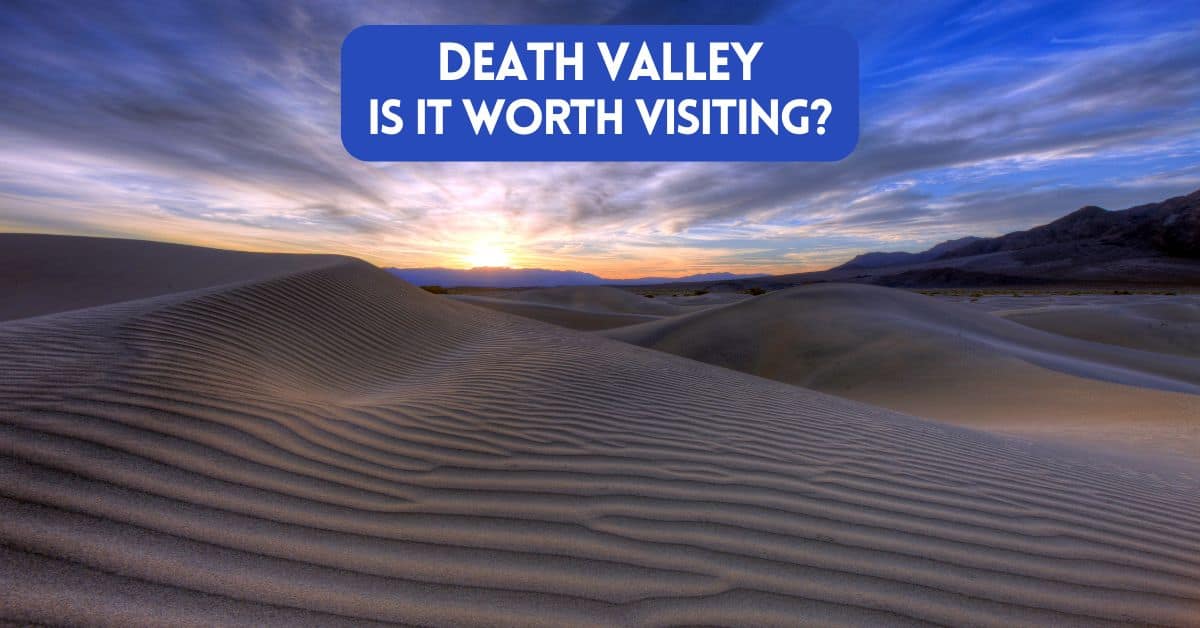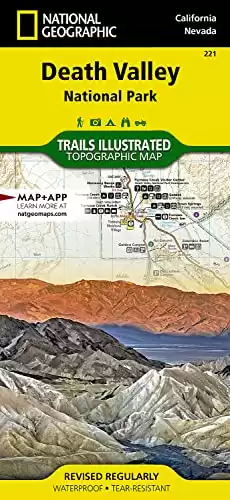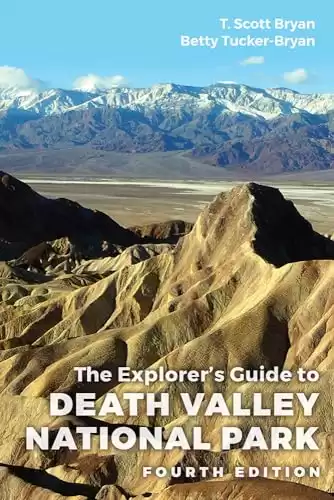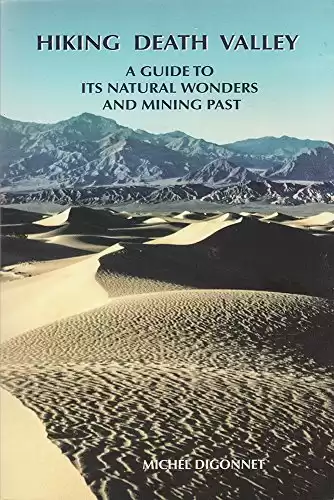Is Death Valley Worth Visiting? Absolutely! Here’s Why
Death Valley defies expectations with its vast, surreal landscapes and extreme climate. For adventurers, nature lovers, and photographers alike, It offers an unforgettable experience. It’s one of our personal most visited national parks. If you’re wondering, is Death Valley is worth visiting, here are 20 compelling reasons for your consideration. Plus, we have a few tips on how to stay safe in one of the hottest places on Earth.
The Places Where We Go contains affiliate links and is a member of the Amazon Services LLC Associates Program. As an Amazon Associate, we earn from qualifying purchases at no extra cost to you when you purchase using one of these Amazon links. Read our disclaimer and privacy policy for more information.
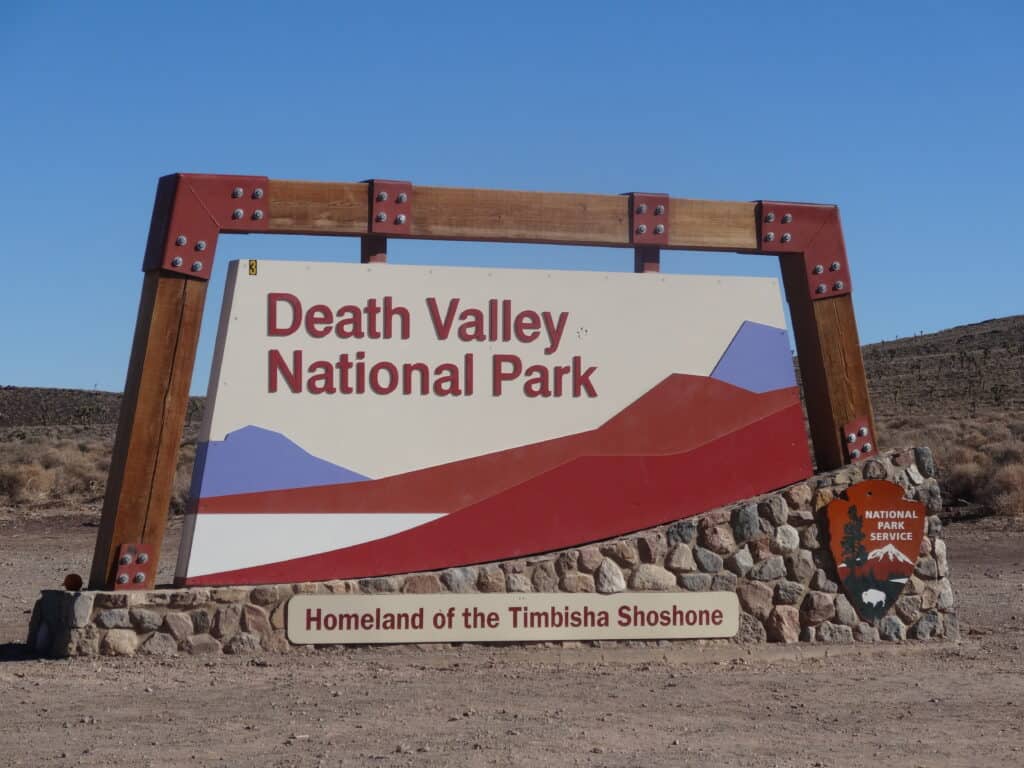
20 Reasons to Visit Death Valley National Park
- Mesmerizing Badwater Basin Salt Flats: Badwater Basin is a striking salt flat located 282 feet below sea level, the lowest point in North America. The surreal, endless salt flats are gorgeous at sunrise and sunset, where light plays across the basin, creating unique photo opportunities.
- Stunning Sand Dunes at Mesquite Flat: The Mesquite Flat Sand Dunes are an iconic part of Death Valley, with towering dunes sculpted by the wind. These dunes offer visitors a sense of desert isolation, perfect for quiet reflection or a picturesque landscape.
- Artist’s Palette and Its Vibrant Colors: A drive along Artist’s Drive takes you through the multicolored hills of Artist’s Palette. Iron oxide deposits create vibrant reds, pinks, purples, and greens, painting the mountainside in unexpected shades.
- Dante’s View: A High-Altitude Perspective: Perched at over 5,000 feet, Dante’s View offers a breathtaking panoramic view of the valley floor. This spot provides a welcome cool breeze and a chance to marvel at the vastness of Death Valley from above.
- Unique Ubehebe Crater: Ubehebe Crater is a volcanic marvel offering a stark and unusual landscape. This massive crater, nearly half a mile wide, provides a dramatic look into Death Valley’s geological past.
- Devil’s Golf Course: This jagged saltpan resembles a treacherous golf course, making it one of the park’s most unique landscapes. The area’s sharp salt formations create an otherworldly scene, especially intriguing for photographers.
- Golden Canyon’s Hiking Trails: Golden Canyon offers a fascinating hike with colorful rock walls, winding canyons, and the chance to reach the Red Cathedral. The canyon is a favorite among hikers who enjoy scenic trails with rewarding views.
- Mosaic Canyon’s Polished Marble Walls: Mosaic Canyon’s narrow passages and smooth, marble-like walls make it a hidden gem in Death Valley. This unique hike reveals intricate rock formations and polished stone surfaces.
- Wildflower Blooms in Spring: During rare “super blooms,” the valley floor is covered with vibrant wildflowers, transforming Death Valley from desolate to dazzling. Springtime visits offer a chance to see a variety of desert flowers in full bloom.
- Historic Scotty’s Castle (Currently Under Renovation): Although it’s currently closed for repairs, Scotty’s Castle is a fascinating piece of Death Valley history. This Spanish-style mansion tells stories of the park’s colorful characters and its early 20th-century past.
- Zabriskie Point’s Sunrise and Sunset Views: Zabriskie Point is famous for its dramatic, multicolored badlands. Watching the sunrise or sunset from here is an experience of watching light and shadows play across the ridges and valleys.
- The Racetrack’s Mysterious Moving Rocks: Known for its “sailing stones,” the Racetrack is a dry lakebed where rocks appear to move on their own. This mysterious phenomenon is intriguing and visually unique, drawing in geologists and curious visitors alike.
- Natural Bridge Canyon: This natural rock arch provides a shaded, scenic stop along a short hike. It showcases the park’s rock formations and geological diversity.
- Panamint Dunes for Solitude Seekers: Panamint Dunes are less crowded than Mesquite Flat, providing a more remote and peaceful dune experience. It’s an excellent choice for those who want to experience the dunes in solitude.
- Historical Borax Mines and Harmony Borax Works: Death Valley’s history is closely tied to borax mining, and the Harmony Borax Works interpretive area offers a glimpse into this era. It includes remnants of mining equipment and informational exhibits.
- Milky Way Viewing and Dark Skies: As a designated International Dark Sky Park, Death Valley is one of the best places to view the Milky Way and night sky. The absence of light pollution allows for an awe-inspiring stargazing experience.
- Experience Extreme Temperatures at Furnace Creek: Furnace Creek is the hottest place on Earth, and while visiting in extreme heat is only for the brave, witnessing the thermometer spike is a unique, record-setting experience.
- Saline Valley Warm Springs : A hidden oasis, the Saline Valley Warm Springs offers warm pools surrounded by palm trees. Accessible only via a long dirt road, it’s a unique, off-the-beaten-path experience.
- Desert Wildlife Spotting: Death Valley is home to a surprising range of wildlife adapted to the harsh desert environment, including bighorn sheep, desert tortoises, and roadrunners.
- Eureka Dunes: Among the Tallest Sand Dunes in North America: Eureka Dunes are some of the tallest in the country, and when conditions are right, the dunes “sing,” emitting a hum as sand slides down their slopes.
If you want to view a Death Valley itinerary for a day trip, check out our companion travel guide article: One Day in Death Valley – Plan Your Perfect Day.
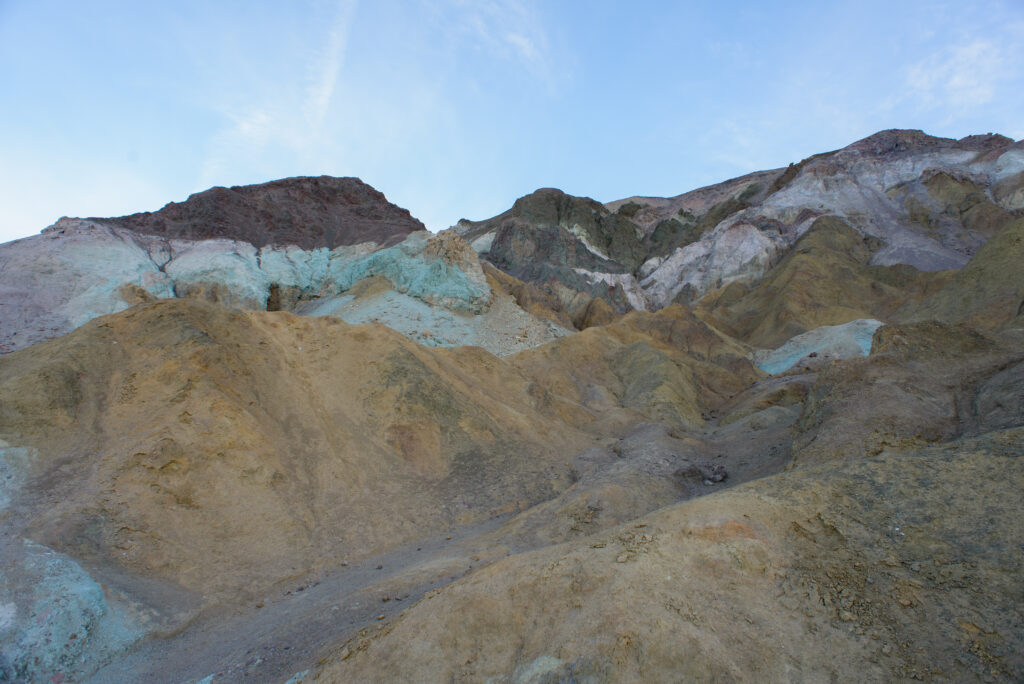
Death Valley Overview
Death Valley, renowned as the largest national park in the United States, offers a unique and remote location for adventurers seeking a different perspective. Visitors are treated to spectacular views that are truly unparalleled, making it a good idea to allocate extra time to explore. Whether planning a scenic drive or looking to experience the park’s diverse terrain, Death Valley promises a great time for all. While any visit is sure to be memorable, the best time to experience the park’s wonders is during the milder months, when temperatures are more accommodating for outdoor activities.
Get Free Weekly Travel News Updates

Getting To Death Valley
Embarking on a road trip to Death Valley is an adventure that promises breathtaking landscapes and a journey through diverse terrains. Starting from Las Vegas, travelers will find themselves heading west, leaving behind the vibrant city lights and venturing into the serene and expansive desert. The drive offers spectacular views, and several opportunities to stop at convenient gas stations dotted along the route, ensuring your vehicle is well-fueled for the journey ahead.
For those departing from Los Angeles, the journey to Death Valley is equally captivating, with the scenic drive taking you through the heart of the Mojave Desert. As you approach the national park, prepare for a change in the landscape, where paved highways gradually give way to dirt roads that lead deeper into the valley. Adventurers are encouraged to explore these less-traveled paths that can lead to secluded spots showcasing the raw beauty of the desert.
Once in Death Valley, parking lots at various visitor centers and trailheads provide ample space for vehicles, making it easy to start your exploration of this unique national park. Whether you’re marveling at the sweeping sand dunes or hiking through colorful canyons, the journey to and within Death Valley is an unforgettable experience that highlights the stark yet stunning beauty of the desert landscape.
|
Primary Rating:
4.8
|
Primary Rating:
4.8
|
Primary Rating:
4.7
|
|
$11.80
|
$24.95
|
$14.41
|
Preparing for a Safe Visit to Death Valley
Stay Hydrated: Temperatures in Death Valley can be extreme, with summer highs over 120°F. It’s crucial to bring plenty of water—at least one gallon per person per day—and stay hydrated throughout your visit.
Pack Sun Protection: Sunburn is a real risk in Death Valley, so bring sunscreen, hats, and sunglasses. Covering up with lightweight, light-colored clothing can also help protect from UV rays.
Have a Reliable Navigation System: GPS and cell signals can be unreliable in remote areas, so it’s wise to download offline maps or bring a physical map to avoid getting lost.
Avoid Hiking During Peak Heat: If you plan to hike, go early in the morning or late in the afternoon to avoid the day’s peak heat. Trails like Golden Canyon and Mosaic Canyon are best enjoyed when temperatures are cooler.
Check Road Conditions and Park Alerts: Roads in Death Valley can occasionally close due to flash floods, so always check park alerts and road conditions before heading out, especially if you plan to visit remote areas like the Racetrack.
Know Emergency Contacts and Park Regulations: Be familiar with the park’s emergency numbers and follow all regulations, including off-road travel restrictions, to ensure a safe visit.
Bring Extra Supplies: Carry extra water, snacks, a first-aid kit, and vehicle supplies like a spare tire, as help can be hours away in remote areas.
Where To Stay in Death Valley – Read Our Guide To Top Places
Closing Thoughts
Death Valley National Park is undoubtedly worth visiting with its stunning landscapes and geological wonders. By being prepared and respecting its challenging environment, you can safely explore this one-of-a-kind destination. Whether you’re there to see its record-breaking temperatures, stargaze, or marvel at its mysterious landscapes, Death Valley promises an adventure you won’t forget.

